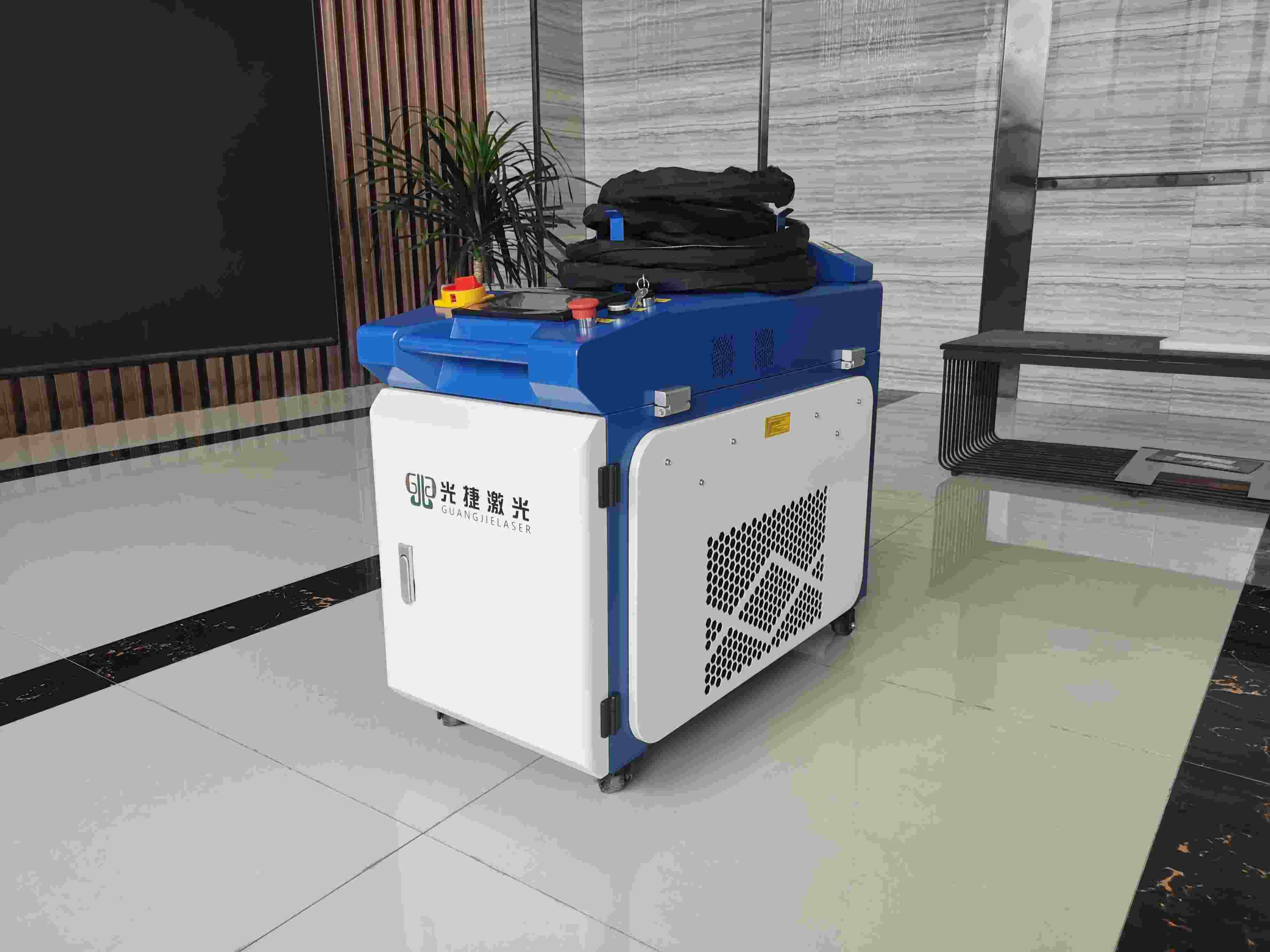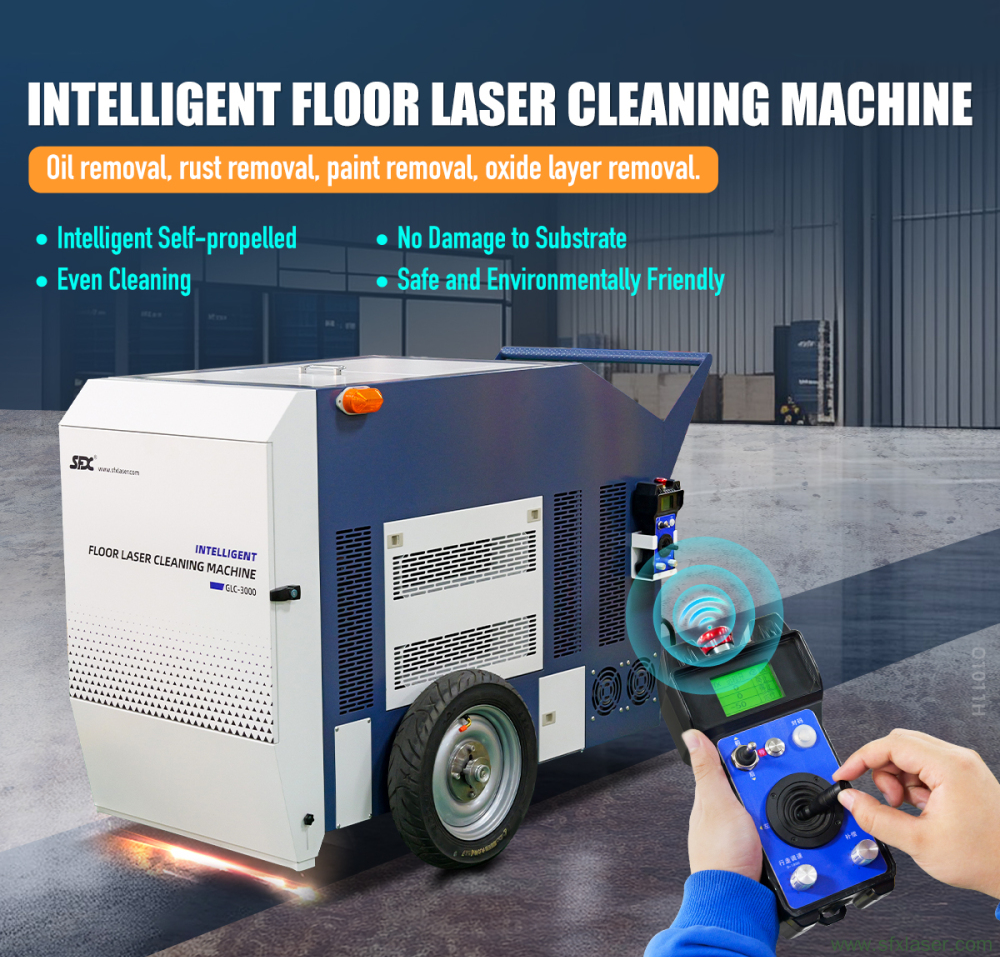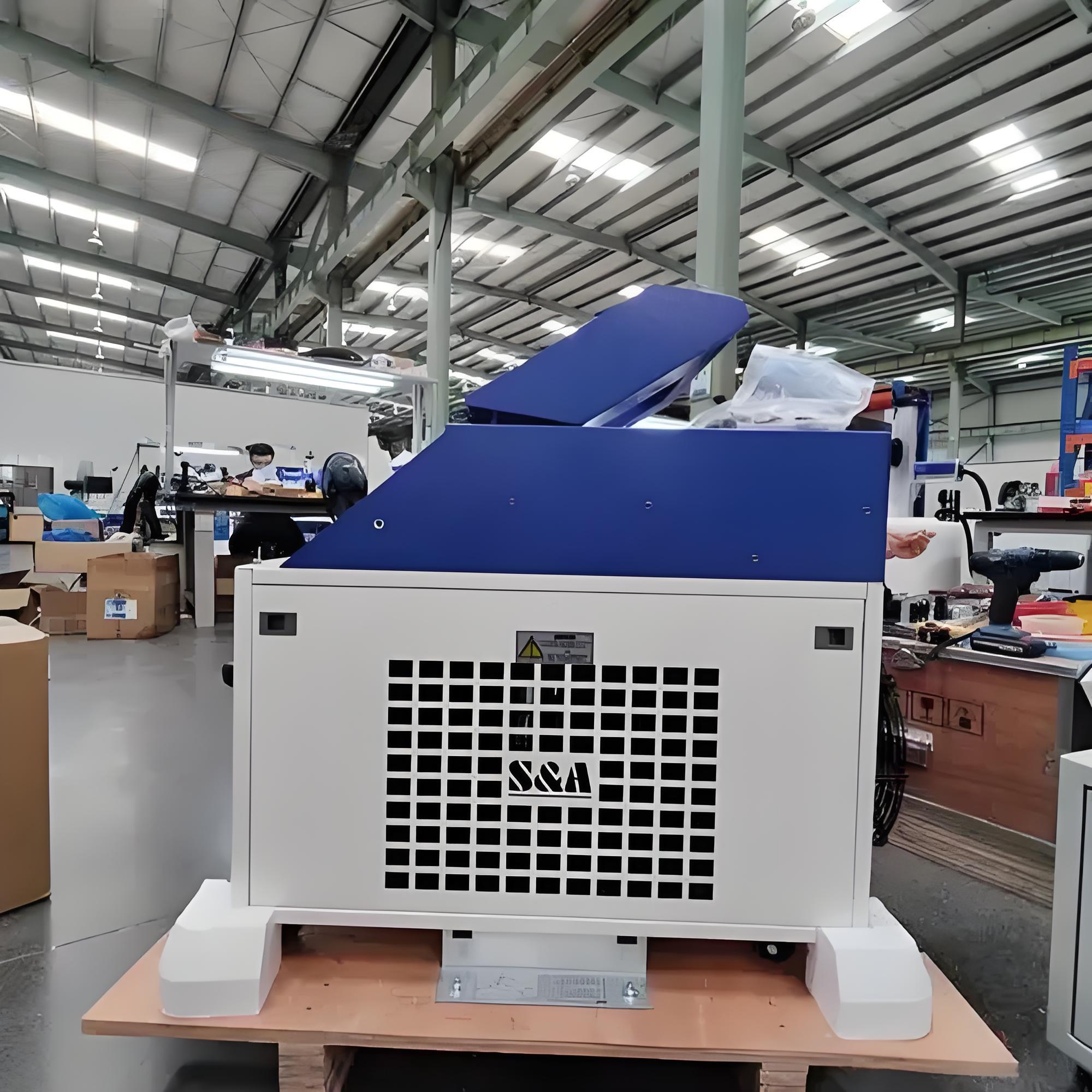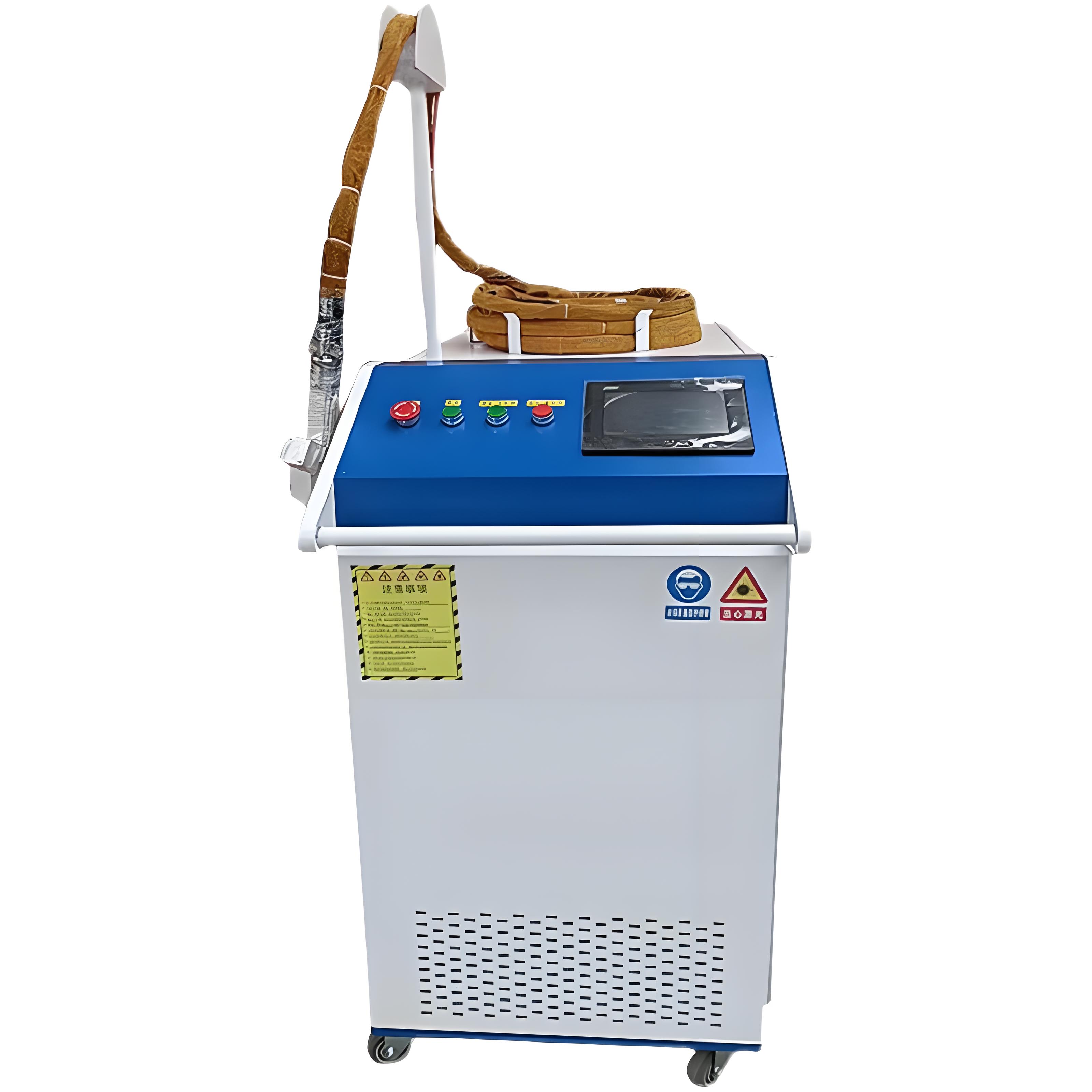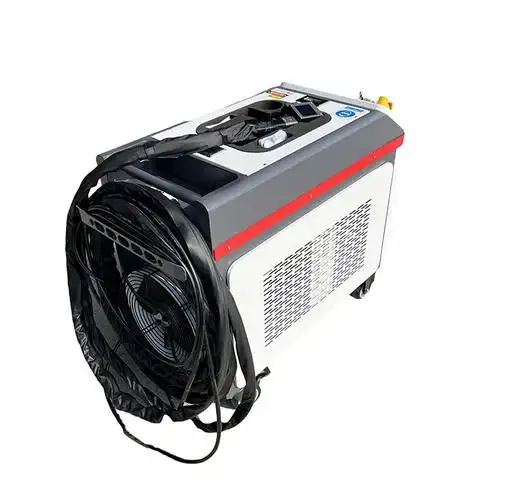As someone who’s spent years tinkering with metal restoration projects and advising small workshops on equipment upgrades, I’ve seen firsthand how laser rust removal machines have revolutionized the way we tackle corrosion. These high-tech tools are a game-changer for anyone looking to restore metal surfaces without the mess of sandblasting or the hazards of chemical treatments. But one question I hear repeatedly from colleagues and clients is: “How much power does a laser rust removal machine need to efficiently remove rust?” It’s a critical question, as the power level directly impacts performance, cost, and suitability for different tasks. Drawing from my hands-on experience and research into laser technology as of 2025, I’ll break down the power requirements, factors affecting efficiency, and practical tips to help you choose the right machine for your needs.

Why Power Matters in Laser Rust Removal
When I first started exploring laser rust removal, I was amazed at how a beam of light could strip away rust, paint, or grime without damaging the underlying metal. The laser ablation process works by focusing high-energy light to vaporize contaminants, leaving a clean surface. The power of the laser—measured in watts (W)—determines how quickly and effectively it can do this. Too little power, and you’re stuck with slow, incomplete cleaning. Too much, and you risk overspending on a machine that’s overkill for your needs or even damaging delicate surfaces. Getting the power right is key to balancing efficiency, cost, and safety.
I learned this the hard way when I borrowed a low-power laser machine for a car restoration project. It took ages to clean a rusty fender, and the results were patchy. Since then, I’ve tested various machines and consulted with manufacturers to understand what power levels work best for different scenarios. Let’s dive into the details.
Power Requirements for Efficient Rust Removal
The power needed for efficient rust removal depends on the type of rust, material, surface area, and speed required. Here’s a breakdown of common power levels and their applications, based on my experience and industry standards:
Low-Power Lasers (20W–100W)
Use Case: These are entry-level machines suited for light rust or thin oxide layers on small, delicate surfaces like jewelry, small tools, or precision parts. They’re often handheld or portable, making them ideal for hobbyists or small workshops.
Efficiency: Slow but precise. I used a 50W laser to clean rust off vintage coins, and it worked well because I didn’t need speed and wanted to avoid surface damage. However, for thicker rust or large areas, it’s too slow.
Example: Cleaning rust from a 1-square-foot area might take 10-20 minutes.
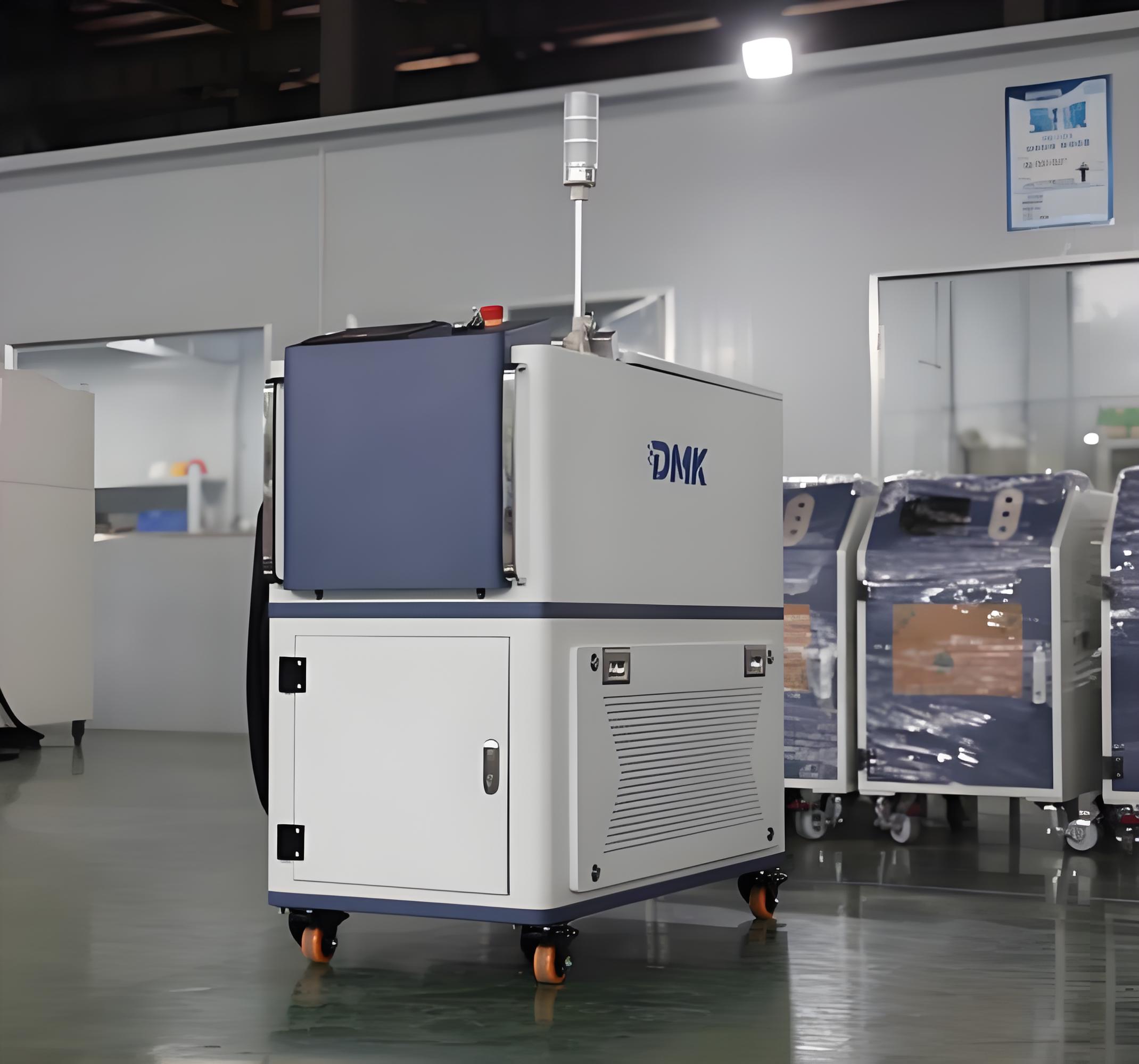
Medium-Power Lasers (100W–500W)
Use Case: The sweet spot for most small to medium-sized commercial tasks, such as automotive parts, machinery components, or metal sculptures. These machines handle moderate to heavy rust on steel, iron, or aluminum.
Efficiency: Much faster than low-power models, balancing speed and precision. I’ve used a 200W laser to clean rusty car chassis parts, clearing a square foot in 2-5 minutes. They’re versatile for workshops with varied projects.
Example: Popular models like the CleanTech LPC-200-CTHD fall in this range, offering good performance for mid-sized jobs.
High-Power Lasers (1,000W–3,000W)
Use Case: Designed for industrial applications, like shipbuilding, heavy machinery, or large-scale infrastructure projects. These tackle thick, stubborn rust or multiple layers of rust and paint on massive surfaces.
Efficiency: Extremely fast, clearing large areas (e.g., a square meter) in minutes. I saw a 1,500W laser in action at a shipyard, stripping rust off steel plates in seconds. However, they’re overkill for small or delicate tasks and require skilled operators.
Example: Used in industries where downtime is costly, like marine or aerospace maintenance.
Ultra-High-Power Lasers (3,000W and Above)
Use Case: Rare and specialized, reserved for extreme industrial tasks, such as cleaning massive steel structures or prepping surfaces for heavy-duty coatings.
Efficiency: Blazingly fast but expensive and complex to operate. I’ve only encountered these in large factories, where they’re used for high-throughput production lines.
Example: A 4,000W laser might clean an entire ship hull section in hours, but it’s impractical for most users.
Factors Affecting Power Needs
Choosing the right power level isn’t just about picking the highest wattage. Here are the key factors I consider when selecting or recommending a laser rust removal machine:
Rust Thickness and Type
Light surface rust (e.g., on tools stored in a damp garage) can be handled by 100W–200W lasers.
Heavy, flaky rust (e.g., on old machinery) requires 500W–1,000W for efficient removal.
Multi-layered rust or rust mixed with paint needs 1,000W or more. I once worked on a rusty trailer with paint over rust, and a 500W laser struggled until we upgraded to 1,000W.
Material Sensitivity
Robust materials like steel or cast iron can handle high-power lasers without damage.
Delicate materials like aluminum, copper, or thin metal sheets require lower power (50W–200W) to avoid warping or etching. I learned this when a 500W laser left marks on a thin aluminum panel—stick to low power for fragile surfaces.
Surface Area and Speed
For small areas (e.g., a single car part), 100W–300W is sufficient if time isn’t critical.
For large surfaces (e.g., a ship hull), 1,000W or more is needed to keep up with production schedules. In my workshop, I use a 200W laser for small jobs but rent a 1,500W unit for big projects to save time.
Pulse vs. Continuous Wave Lasers
Pulsed lasers (common in 20W–500W models) deliver short bursts of energy, ideal for precision and delicate surfaces. They’re less power-hungry but slower.
Continuous wave lasers (common in 1,000W+ models) emit a steady beam, perfect for heavy rust but risk overheating sensitive materials. I prefer pulsed lasers for most of my restoration work due to their control.
Environmental Conditions
Humid or salty environments (e.g., coastal areas) create tougher rust, often requiring higher power.
Dry, indoor settings with light rust can be managed with lower power. I’ve noticed coastal clients need 500W–1,000W machines, while inland workshops get by with 200W.
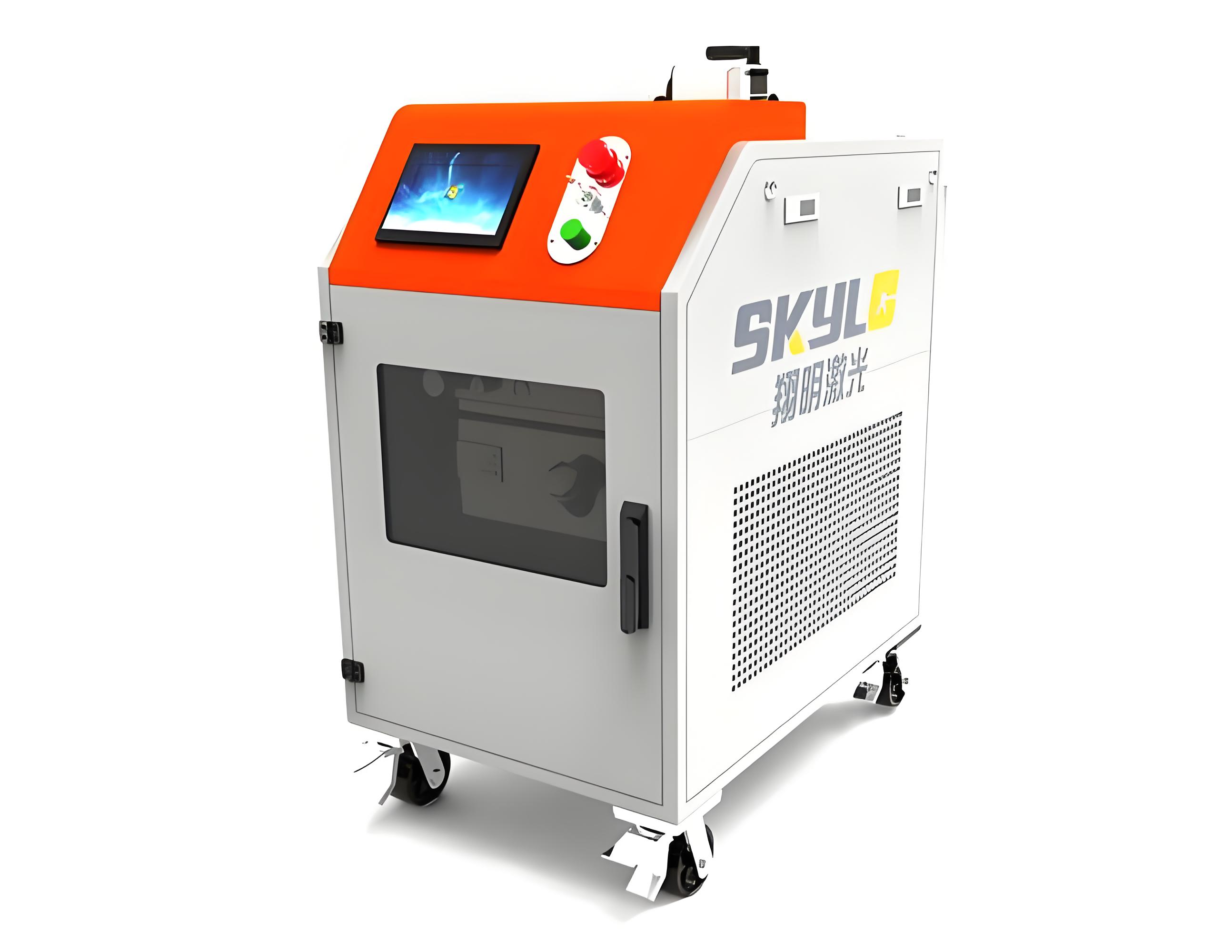
Power Level Comparison Table
To help you visualize the right power for your needs, here’s a table summarizing power levels, applications, and efficiency:
| Power Range | Rust Type | Best For | Cleaning Speed (1 sq ft) | Cost Range |
|---|---|---|---|---|
| 20W–100W | Light surface rust | Small parts, delicate surfaces | 10–20 minutes | $2,000–$10,000 |
| 100W–500W | Moderate to heavy rust | Automotive, machinery, workshop | 2–5 minutes | $10,000–$30,000 |
| 1,000W–3,000W | Thick, layered rust | Industrial, marine, large-scale | 30 seconds–2 minutes | $30,000–$100,000 |
| 3,000W+ | Extreme rust/paint | Heavy industry, production lines | Seconds | $100,000+ |
This table shows that 100W–500W lasers are versatile for most small to medium workshops, while 1,000W+ is for industrial-scale tasks.
My Experience with Laser Rust Removal Machines
A few years ago, I invested in a 200W pulsed laser for my small restoration shop, mainly for cleaning vintage car parts and farm tools. It was a solid choice for light to moderate rust, stripping a rusty fender in about 5 minutes per square foot. The precision was impressive—no damage to the metal, even on intricate parts. But when I took on a larger project restoring a rusty steel gate, the 200W machine was too slow, taking hours for a few square meters. I rented a 1,000W continuous wave laser, and it blasted through the rust in a fraction of the time, though I had to be careful not to overheat the thinner sections.
One mistake I made early on was underestimating the importance of pulse settings. On a 100W laser, I used a high pulse frequency on a delicate copper piece, leaving micro-abrasions. Adjusting to a lower frequency solved the issue. These experiences taught me that power isn’t everything—matching the machine to the task and tweaking settings is crucial.
How to Choose the Right Power Level
To pick the right laser rust removal machine, here’s what I recommend based on my projects:
Assess Your Workload
For hobbyists or small shops with occasional light rust, a 50W–200W laser is cost-effective and sufficient.
For small to medium businesses (e.g., auto repair or fabrication), a 200W–500W laser offers versatility and speed.
For industrial operations with heavy rust or large surfaces, invest in a 1,000W–2,000W machine.
Consider Material Types
For delicate or thin metals, stick to 100W–300W pulsed lasers to avoid damage.
For robust steel or iron, 500W–1,500W lasers handle thick rust without issues. I always test a small area first to check for material sensitivity.
Evaluate Speed Needs
If time is critical (e.g., production lines), higher power (1,000W+) is worth the cost.
For less urgent tasks, a 200W–500W laser is more budget-friendly. I balance speed and cost by renting high-power machines for big jobs.
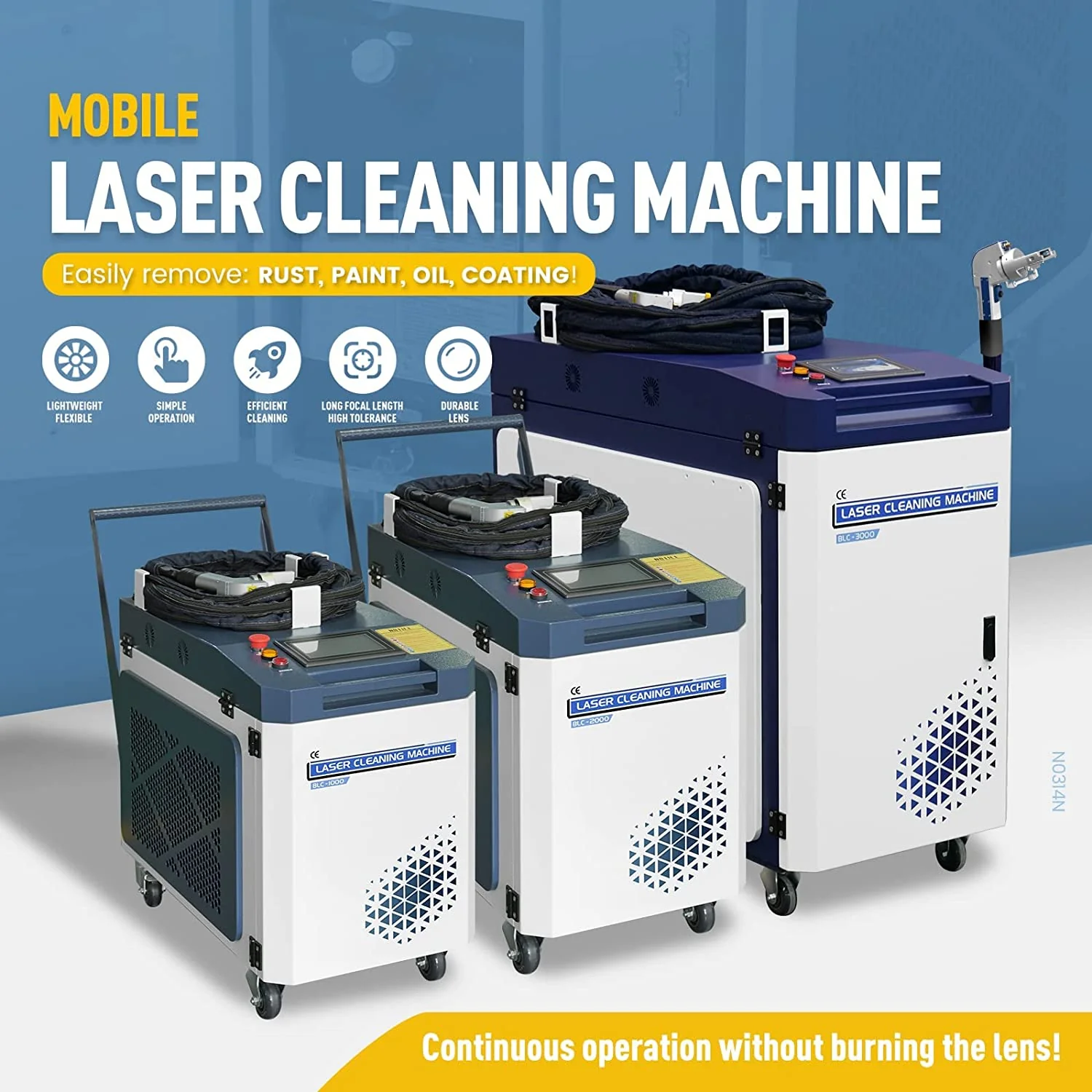
Check Budget and ROI
Low-power lasers are affordable but slow, ideal for small budgets.
High-power lasers are expensive but save time and labor, offering better ROI for large operations. My 200W machine paid for itself in a year through small jobs, but industrial clients justify 1,000W+ for high throughput.
Look for Adjustable Settings
Machines with variable power and pulse settings (e.g., 50W–200W adjustable) offer flexibility. I prefer these for mixed workloads, as they adapt to different rust levels and materials.
Practical Tips for Efficient Rust Removal
To maximize efficiency with any laser power level, here’s what I do:
Optimize Settings
Adjust pulse frequency and beam width based on rust thickness. Lower frequencies work better for delicate surfaces, while higher ones speed up heavy rust removal.
I experiment on a test piece to find the sweet spot before tackling the main project.
Clean the Surface First
Remove loose dirt or grease with a wire brush or degreaser before lasering. This reduces the laser’s workload and improves efficiency. I learned this after wasting time lasering through grime.
Use Proper Safety Gear
Laser safety glasses and protective gloves are non-negotiable. High-power lasers can cause burns or eye damage. I always ensure my team is trained on safety protocols.
Maintain the Machine
Clean the lens regularly to avoid power loss from dust or residue.
Check cooling systems (air or water) to prevent overheating, especially on 1,000W+ machines. I schedule monthly maintenance to keep my laser running smoothly.
Work in Controlled Conditions
Avoid lasering in high humidity or direct sunlight, as these can affect beam focus. I set up indoor or shaded workstations for consistent results.

Alternatives to Laser Rust Removal
If a laser machine’s power or cost doesn’t suit your needs, here are other methods I’ve tried:
Sandblasting: Effective for heavy rust but messy and can damage delicate surfaces.
Chemical Rust Removers: Cheap but hazardous and require disposal precautions.
Wire Brushing/Grinding: Labor-intensive and less precise, better for small jobs.
Electrolysis: Great for small, submerged parts but slow and impractical for large surfaces.
Final Thoughts
How much power does a laser rust removal machine need for efficient rust removal? For most small to medium workshops, 100W–500W lasers strike the perfect balance of speed, precision, and cost, handling light to heavy rust effectively. For industrial-scale projects with thick rust or large surfaces, 1,000W–2,000W machines deliver unmatched efficiency, though they’re pricier. My 200W laser has been a workhorse for car parts and tools, but I rent higher-power units for bigger jobs. Consider your workload, materials, and budget, and choose a machine with adjustable settings for flexibility. With the right power and technique, laser rust removal can transform your projects, saving time and delivering pristine results.
Here’s to rust-free, gleaming metal surfaces!
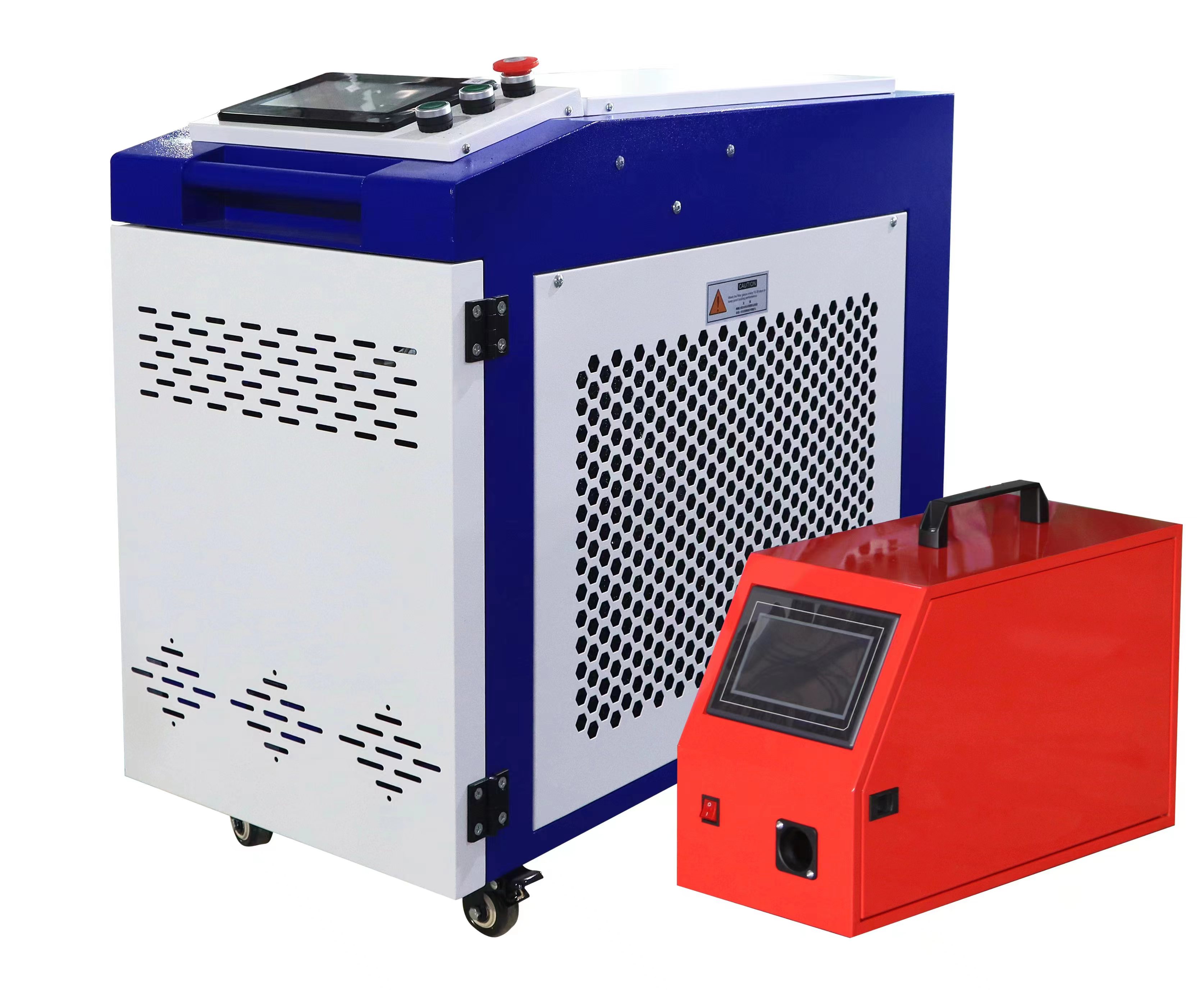
Frequently Asked Questions
Q1: Can a 100W laser remove heavy rust?
A: It can, but it’s slow and inefficient. For heavy rust, 500W–1,000W lasers are better, clearing it faster without compromising results.
Q2: Are high-power lasers safe for delicate metals?
A: Not always. 1,000W+ lasers can damage thin or sensitive metals like aluminum. Use 50W–200W pulsed lasers for delicate surfaces.
Q3: How do I know if a laser’s power is enough for my needs?
A: Test the machine on a sample piece or consult the manufacturer with details about your rust type and material. I always request demos before buying.
Q4: Do higher-power lasers use more electricity?
A: Yes, 1,000W+ lasers consume more power and may require three-phase electrical systems. Check your facility’s capacity before investing.
Q5: Can I rent a laser rust removal machine to test power levels?
A: Many suppliers offer rentals, especially for 500W–2,000W machines. I’ve rented high-power units for big projects to avoid upfront costs.

